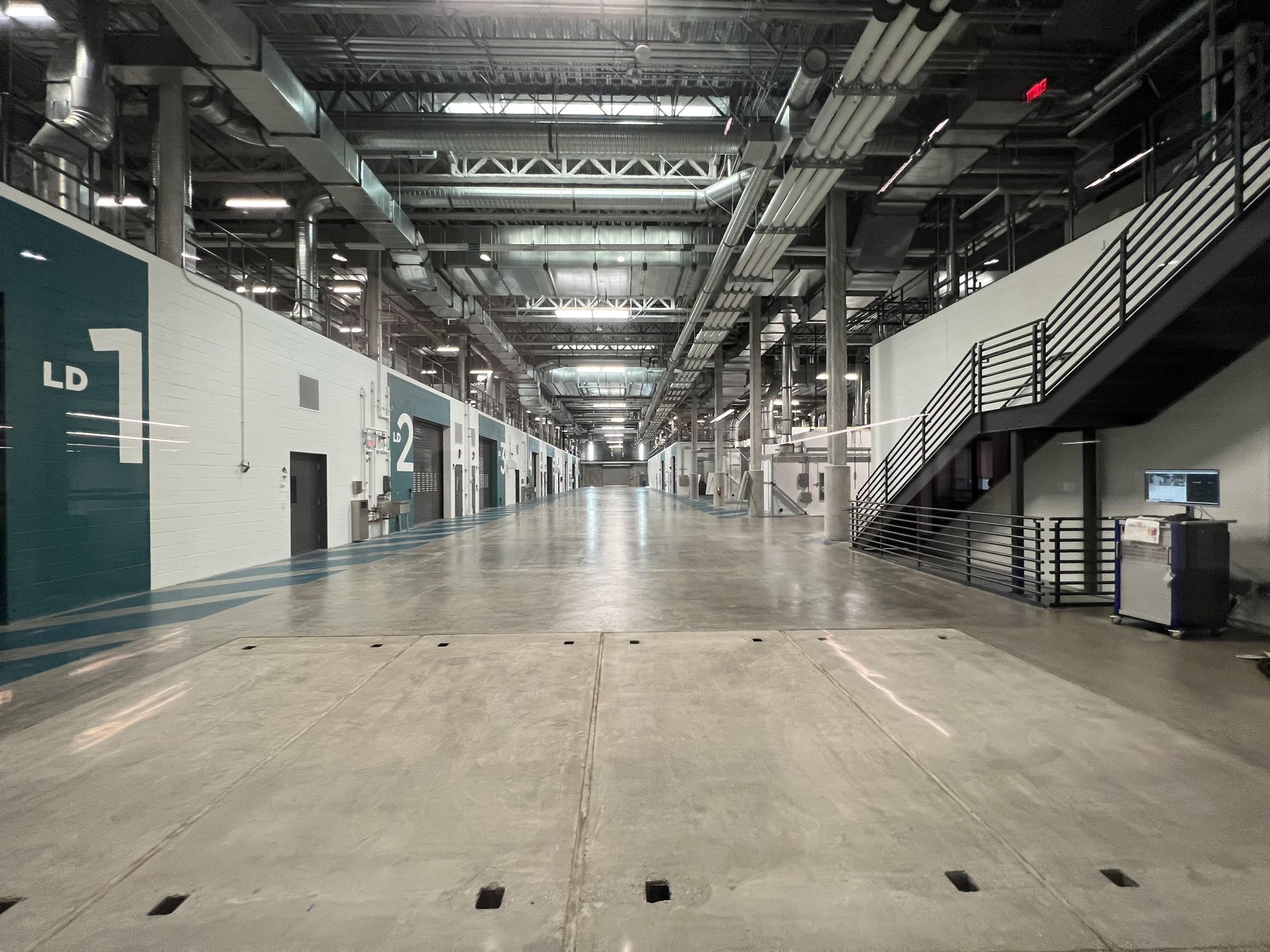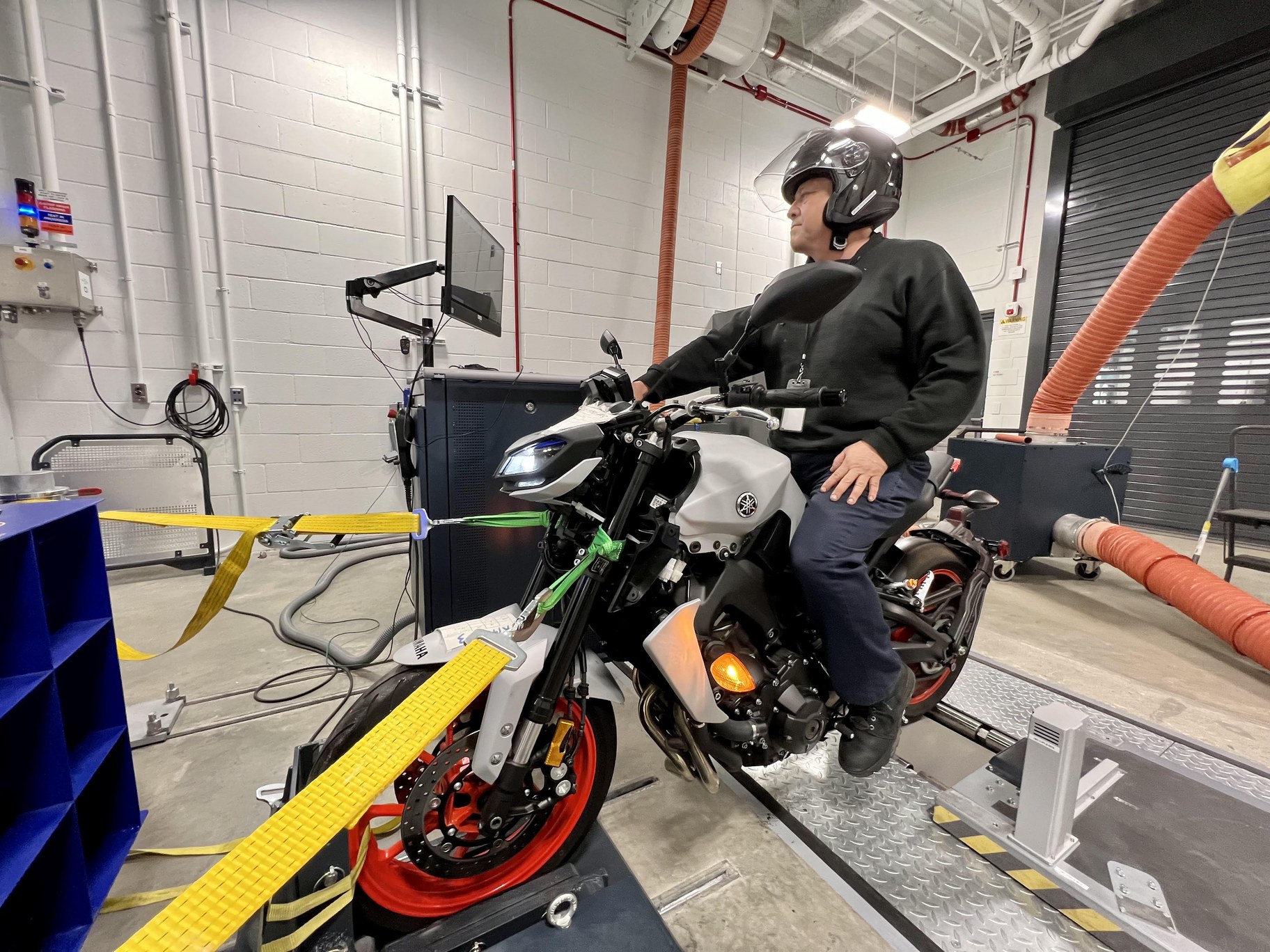For more than half a century, California has fought a long and hard war against air pollution, particularly smog generated by the state’s millions of cars and trucks. Even with air quality improvements made in the state since the California Air Resources Board, or CARB, was founded in 1967, smog-forming emissions still cause over 1,300 premature deaths in the Los Angeles area annually. The threat of climate change has only increased the stakes of the war agaings air pollution.
In the decades to come, that fight will continue at the California Air Resources Board’s massive new laboratory in Riverside, which is expected to fully open this summer.
The lab, which is the size of six football fields, is like the NASA of smog research – a place for the state to study air pollution and test vehicles in all shapes and sizes, to make sure they’re clean enough to operate on California’s roads.

The California Air Resources Lab in Riverside is a massive facility where the state can test vehicle pollution levels – and one day, the longevity of vehicle batteries. Photo by Saul Gonzalez.
Most of the testing will happen in the lab’s 10 test cells, each the size of a big garage. In them, vehicles are attached to sensors and driven on the automotive equivalent of a treadmill. The vehicles’ tailpipe emissions, like carbon monoxide and nitrogen oxides, are captured and analyzed to see how many grams per mile of pollutants they generate.

A CARB tester operates a motorcycle on a virtual course as emissions are captured from the tailpipe.Photo by Saul Gonzalez.
This lab also tests other kinds of pollution-spewing machines, from motorcycles to gas-powered lawn mowers to big commercial trucks. The trucks now make up the single biggest source of smog forming emissions in the state, according to California Air Resources Board officials. So heavy-duty vehicle emissions testing, from trucks to trains to forklifts, will be a priority of this lab.
Experts have long worried about the health threat those vehicles, in particular, pose to poorer Black and Latino communities living near industrial areas like the ports of Los Angeles and Long Beach, or warehouse and logistics centers in the Inland Empire.
“We've realized that these communities suffer more pollution than their neighbors,” says Annette Hébert, the deputy executive officer of CARB. “I think this place is going to focus a lot more on that, the heavy-duty element, than we could before.”
Along with making sure vehicles meet the state’s clean air standards, which are tougher than federal standards, CARB emissions testers are also always on the lookout for possible cheating by vehicle manufacturers.
This agency, after all, helped uncover one of the auto industry’s biggest environmental scandals. A decade, ago technicians at CARB’s old lab in El Monte, along with researchers in West Virginia and the U.S. Enviromental Protection Agency, discovered Volkswagen and other vehicle manufacturers had rigged millions of vehicles to cheat pollution testing.
Volkswagen installed sophisticated software in its diesel vehicles to deliberately evade accurate tailpipe emissions testing. The software made it look like cars were polluting much less than they actually were.
CARB testing helped catch Volkswagen red-handed, says Hébert.
“VW admitted finally to us, after going back and forth with us, that they actually did put in programming that cheated emission control systems,” said Hébert. “Once it was discovered, we immediately said you can’t sell these cars.”
But CARB’s giant new, state-of-the-art lab partly exists because of the cheating scandal. As part of a wider settlement with the state of California, VW paid more than $150 million to help build the air agency’s facility, more than a third of its total cost.
As it continues to try to keep car makers honest about how much their vehicles pollute, CARB also asks motorists for their help, randomly reaching out to everyday California drivers to test their vehicles for emissions after they’ve been on the road for hundreds of thousands of miles.
That examination of cars and trucks that have been driven in real world situations can provide a better picture of vehicle emissions than new vehicles straight off the factory floor.
Even as CARB continues its fight to cut pollution from internal combustion engines, technicians at its lab also have to get ready for some of the biggest changes in automotive history – the growing popularity of electric vehicles and California’s goal of eliminating the sale of all new gas-powered cars in the state by the year 2035 as a way to fight climate change.
Hébert says this lab is ready for an electric future, where testing will shift from measuring tailpipe emissions to testing the longevity of EV batteries.
”It's not going to do any consumer any good if you're going to [buy an] electric car [and] the battery only lasts three or four years. You want it to last 10, 12, 15 years,” says Hébert.
But Hébert cautions that even with all the talk about electric cars, gas vehicles will still be on California roads and freeways for decades to come, meaning the lab’s emissions reduction research will remain relevant. Weaning ourselves completely off of fossil fuels, Hébert cautions, won’t be quick and it won’t be easy.
